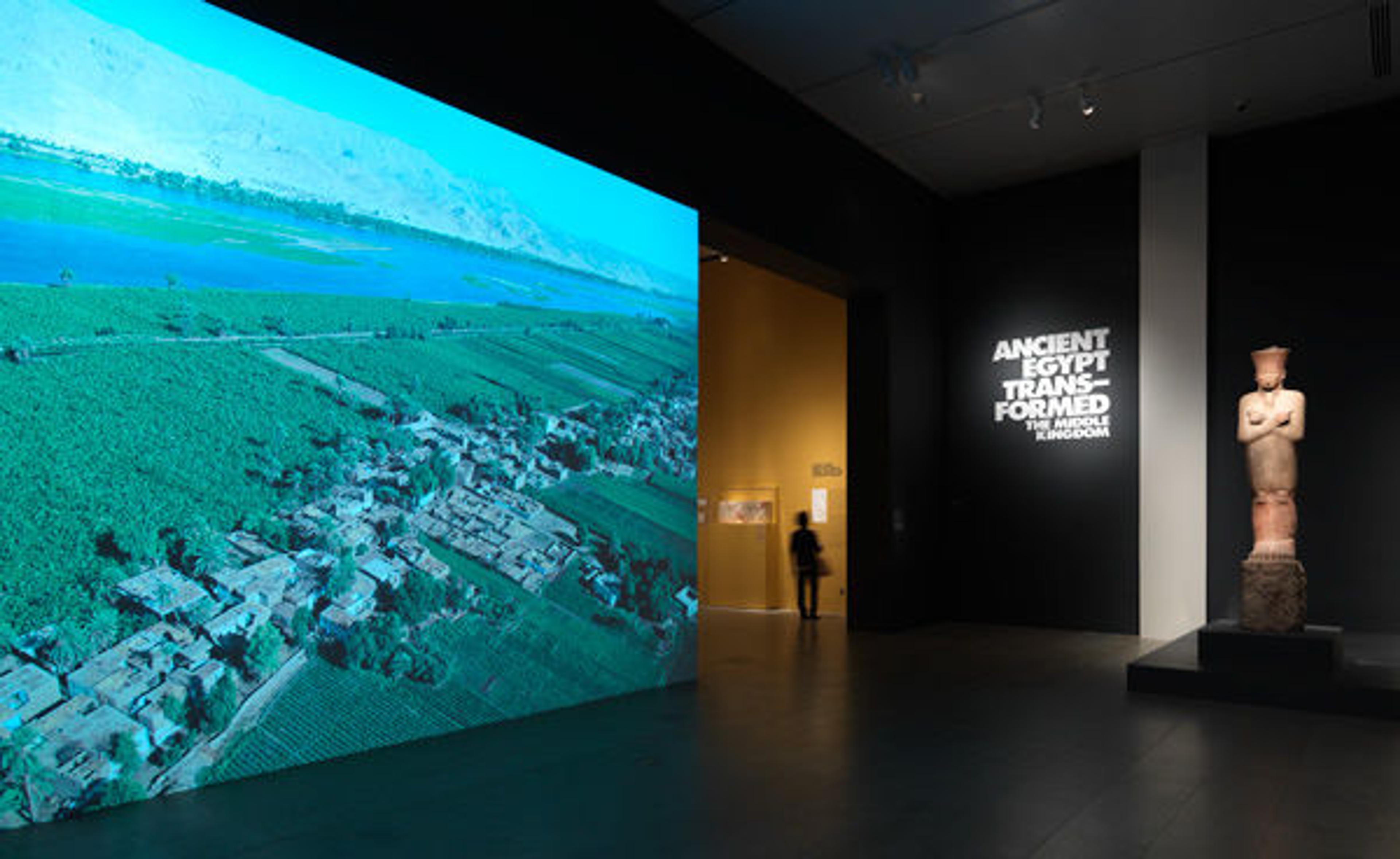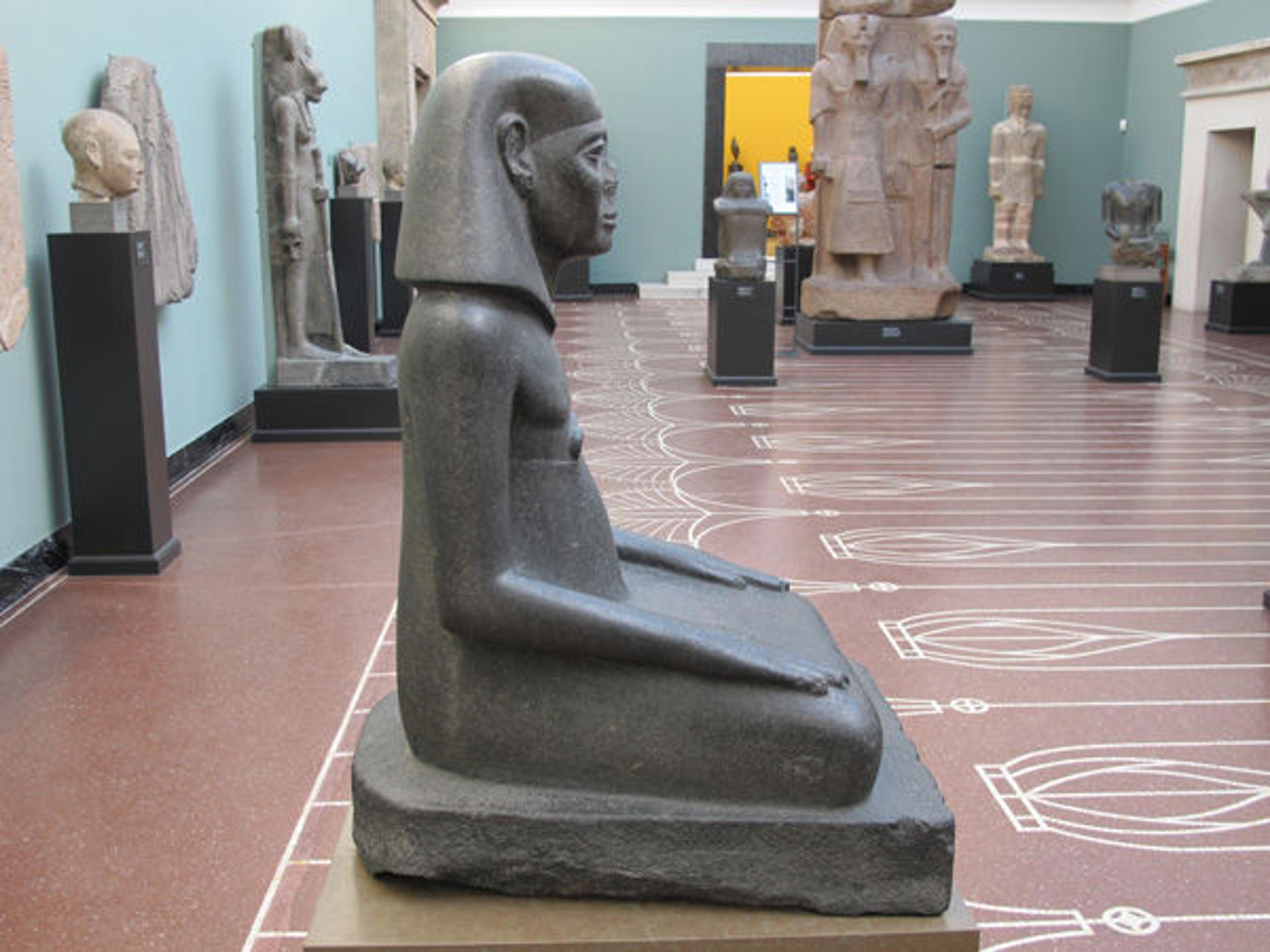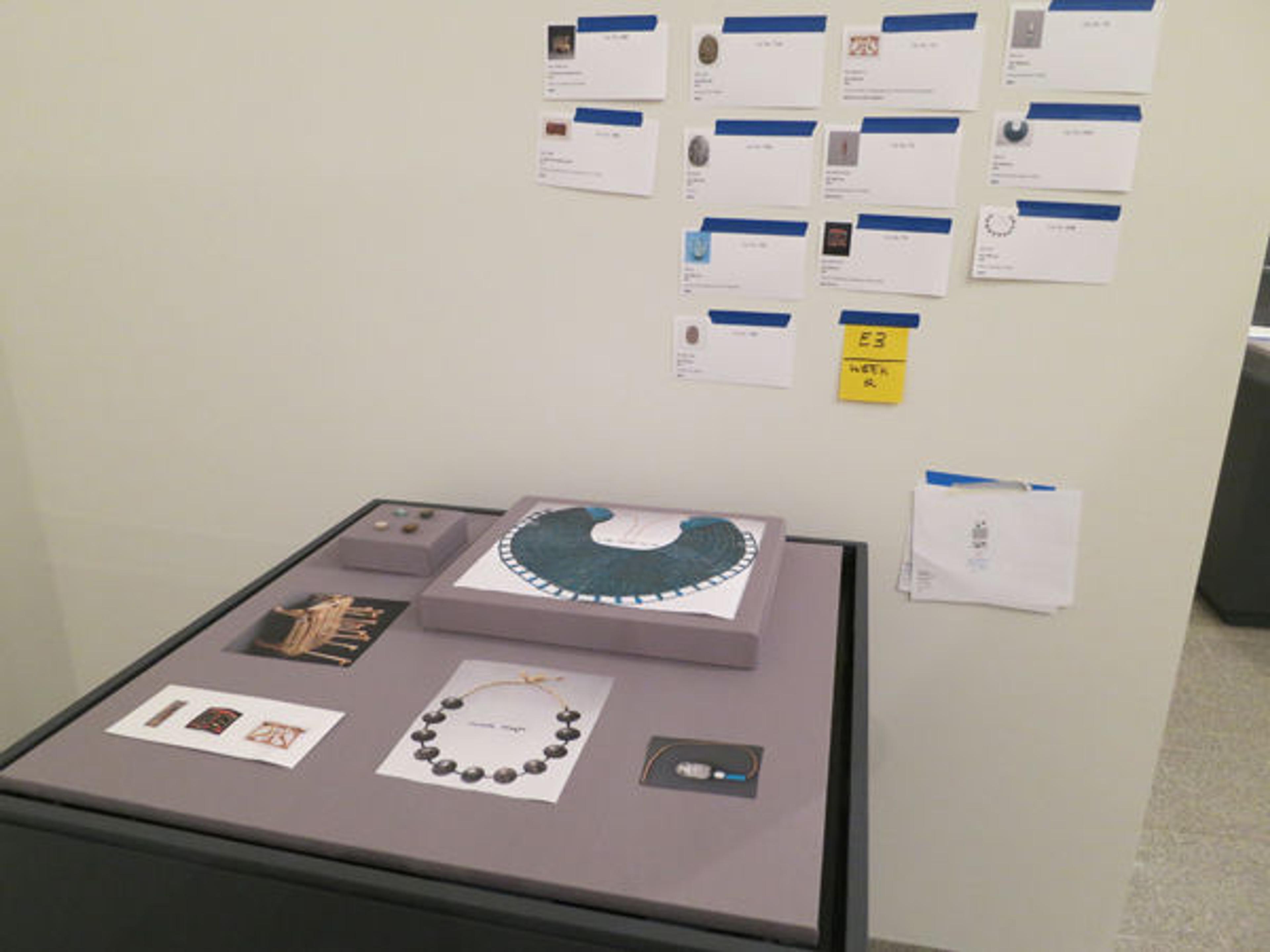Welcome to Ancient Egypt Transformed: The Middle Kingdom

The entrance to Ancient Egypt Transformed: The Middle Kingdom, on view through January 24, 2016
«October 12 marked the opening of Ancient Egypt Transformed: The Middle Kingdom—a major exhibition that highlights the art, culture, literature, and religious beliefs of the Middle Kingdom (mid-Dynasty 11–Dynasty 13, around 2030–1650 B.C.). The Middle Kingdom was an era during which the ideas and concepts that formed the basis of ancient Egyptian civilization were dramatically transformed, sparking the creation of amazing works of art that remain compelling, immediate, and often poignant, thousands of years after their creation.»
When visitors enter this exhibition, they will find themselves immersed in another time, another place, another civilization, one that is far from twenty-first-century New York City. Curated by myself, Curator Emerita Dorothea Arnold, Curator Dieter Arnold, and Research Associate Kei Yamamoto, this exhibition's little world will exist for only a few months before the 230 objects on display are returned to their owners across Europe and North America, as well as the Egyptian art galleries here at the Met. The weeks of installation leading up to the show's opening have been an interesting and often emotional experience, as great works of sculpture, relief, and other objects moved into place and began to very profoundly relate to each other, sometimes in ways we had not anticipated. It has been an exciting time.
This blog series on Now at the Met will address many different aspects of the exhibition, but for now we will start at the beginning: How did this exhibition come into being? Why is it important? Why now, and why at the Met?
Ancient Egypt Transformed is the product of several years of intensive work for its curators and a culmination of studying and thinking about the period throughout our careers. The concentration of Middle Kingdom specialists in the Department of Egyptian Art was a key impetus for the exhibition: we wanted to share our love of and fascination with this great period of Egyptian civilization with a wider audience. Another was the Met's collection of Middle Kingdom art—which is one of the finest in the world outside of Egypt—notable for such objects as the funerary models from the tomb of Meketre, reliefs from the pyramid complexes of Amenemhat I and Senwosret I, the jewelry of Princess Sithathoryunet, and the sculptures of kings Nebhepetre Mentuhotep II and Senwosret III. Many of these objects derive from the Met's own excavations at the sites of Lisht and in Thebes, undertaken between 1906 and 1936. Under a system of partage, or division of finds, the excavated objects were divided between Egypt and the excavating institutions.

Statue of the High Steward Gebu in a cross-legged pose in the galleries of the Ny Carlsberg Glyptotek, Copenhagen. Photo courtesy of the author
In shaping the exhibition, we traveled to museums throughout Europe and North America to examine masterpieces of Middle Kingdom art with which we were long familiar, but also to search for lesser-known works that could become important components of our narrative. We identified key objects in major museums such as: the British Museum; Louvre; Ägyptisches Museum und Papyrussammlung, Berlin; Kunsthistorisiches Museum, Vienna; and Ny Carlsberg Glyptotek, Copenhagen; as well as in museums with smaller Egyptian collections including the Nelson-Atkins Museum, Kansas City; the Medelshavsmuseet, Stockholm; and the Oriental Museum, Durham. The lenders to our exhibition have been extraordinarily generous, and collaborating with them has been one of the most gratifying aspects of preparing the exhibition.
Early on we decided that the Middle Kingdom should be presented thematically rather than strictly chronologically, as we believed that its transformational aspects would find greater resonance when grouped in this manner. Thus, for example, sculptures of the king dominate a single gallery in which the idealizing, divinizing works of the early Twelfth Dynasty are dramatically juxtaposed with the more humanizing images of the mid- to late Twelfth Dynasty. Images depicting family groups and magical objects found throughout the Middle Kingdom are more effective when viewed together.

Exhibition gallery view featuring sculptures of Middle Kingdom pharaohs
Once we had commitments from our lenders, we worked simultaneously on the catalogue and the design of the exhibition. Forty authors contributed essays and entries to the catalogue based on their expertise with various aspects of Middle Kingdom art, history, literature, and culture. Anna-Marie Kellen of the Met's Photo Studio took new images of all the objects in the Museum's collection and about half of the loans from the European and American museums. Artist Sara Chen created new drawings for use in the catalogue and in the gallery. It was of particular importance for us to produce a beautifully illustrated catalogue that would be of interest to the general public as well as Egyptologists, as the publication will remain in circulation long after the exhibition itself has concluded.
Egyptian Art curators spent many hours with designer Daniel Kershaw, grouping the objects according to gallery before assigning them to specific cases and positions. This was a process of continuous refinement as we sought to make this large exhibition understandable. As our plans progressed, we realized that certain objects were superfluous or did not add to the exhibition narrative; we then removed these from the exhibition's roster. We were fortunate to be able to hold the exhibition in the Tisch exhibition galleries, a space remarkable both for flexibility and its size, which allowed us ample space for the monumental works that are one of the characteristics of the Middle Kingdom. The actual installation took more than five weeks, beginning first with objects from our own collection before working with the loans.

Preparing the installation of a display case with objects that belonged to elite individuals of the Middle Kingdom. Photo courtesy of the author
The project represents the efforts of many people—designers, conservators, installers, registrars, art handlers, riggers, metal workers, carpenters, painters, editors, press representatives, lighting specialists, photographers—all of whom have worked with great dedication, skill, and care to turn a concept into an actual exhibition. Most of the objects are made of stone and many are quite large, with the heaviest work weighing in at about 2,500 pounds! Installing them was not an easy task, but this was accomplished so expertly that it is difficult now to detect the effort.
Ancient Egypt Transformed: The Middle Kingdom is a multifaceted exhibition with large, imposing works of art standing alongside small, intimate ones. It is an exhibition that will reward multiple visits and careful examination of a collection of masterpieces that are unlikely to be brought together again in our lifetime. We hope that it will be a transformative experience for our visitors.
Related Links
Ancient Egypt Transformed: The Middle Kingdom, on view October 12, 2015–January 24, 2016
82nd & Fifth: "Magical" by Adela Oppenheim
Adela Oppenheim
Curator Adela Oppenheim received her BA from New York University, MA from the University of Pennsylvania, and PhD from the Institute of Fine Arts, where she completed a dissertation on the decorative program of the Senwosret III pyramid temple at Dahshur. She co-directs (with Curator Dieter Arnold) the Museum's excavations at the Middle Kingdom pyramid complex of Pharaoh Senwosret III at Dahshur, where her work focuses on the relief decoration of the king's temples. Adela has written and lectured extensively on Middle Kingdom art and the results of the Dahshur excavations.